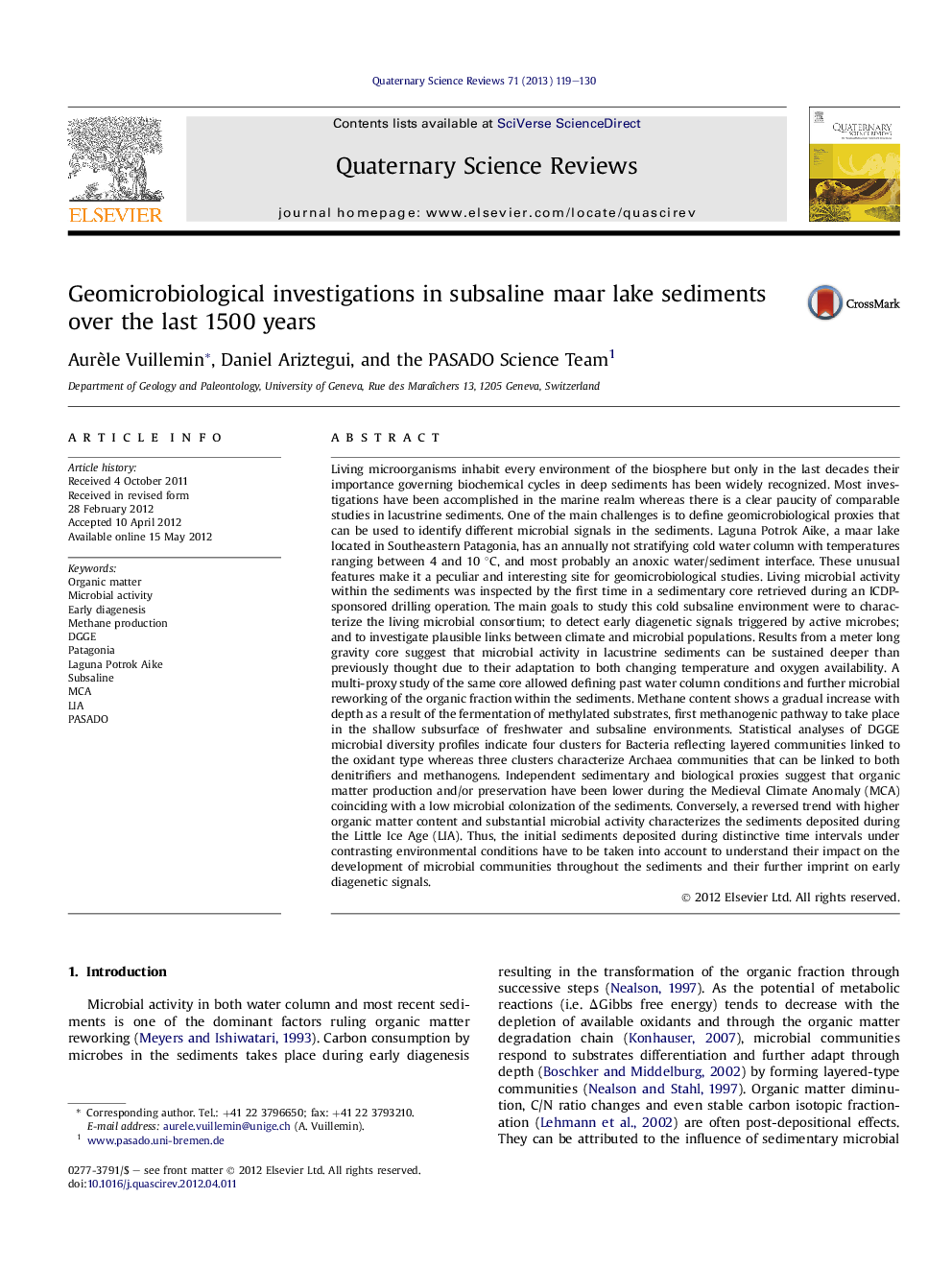| کد مقاله | کد نشریه | سال انتشار | مقاله انگلیسی | نسخه تمام متن |
|---|---|---|---|---|
| 4736873 | 1640863 | 2013 | 12 صفحه PDF | دانلود رایگان |
Living microorganisms inhabit every environment of the biosphere but only in the last decades their importance governing biochemical cycles in deep sediments has been widely recognized. Most investigations have been accomplished in the marine realm whereas there is a clear paucity of comparable studies in lacustrine sediments. One of the main challenges is to define geomicrobiological proxies that can be used to identify different microbial signals in the sediments. Laguna Potrok Aike, a maar lake located in Southeastern Patagonia, has an annually not stratifying cold water column with temperatures ranging between 4 and 10 °C, and most probably an anoxic water/sediment interface. These unusual features make it a peculiar and interesting site for geomicrobiological studies. Living microbial activity within the sediments was inspected by the first time in a sedimentary core retrieved during an ICDP-sponsored drilling operation. The main goals to study this cold subsaline environment were to characterize the living microbial consortium; to detect early diagenetic signals triggered by active microbes; and to investigate plausible links between climate and microbial populations. Results from a meter long gravity core suggest that microbial activity in lacustrine sediments can be sustained deeper than previously thought due to their adaptation to both changing temperature and oxygen availability. A multi-proxy study of the same core allowed defining past water column conditions and further microbial reworking of the organic fraction within the sediments. Methane content shows a gradual increase with depth as a result of the fermentation of methylated substrates, first methanogenic pathway to take place in the shallow subsurface of freshwater and subsaline environments. Statistical analyses of DGGE microbial diversity profiles indicate four clusters for Bacteria reflecting layered communities linked to the oxidant type whereas three clusters characterize Archaea communities that can be linked to both denitrifiers and methanogens. Independent sedimentary and biological proxies suggest that organic matter production and/or preservation have been lower during the Medieval Climate Anomaly (MCA) coinciding with a low microbial colonization of the sediments. Conversely, a reversed trend with higher organic matter content and substantial microbial activity characterizes the sediments deposited during the Little Ice Age (LIA). Thus, the initial sediments deposited during distinctive time intervals under contrasting environmental conditions have to be taken into account to understand their impact on the development of microbial communities throughout the sediments and their further imprint on early diagenetic signals.
► Our sampling procedure provides asceptic samples and microbial activity assessments.
► Our multyproxy with its range of techniques develops new insights for limnology.
► Limnological proxies and microbiological proxies appeared strongly correlated.
► The specific MCA and LIA periods are being reflected in microbial organization.
► Our geomicrobiological approach provides new constraints on early diagenetic signals.
Journal: Quaternary Science Reviews - Volume 71, 1 July 2013, Pages 119–130
